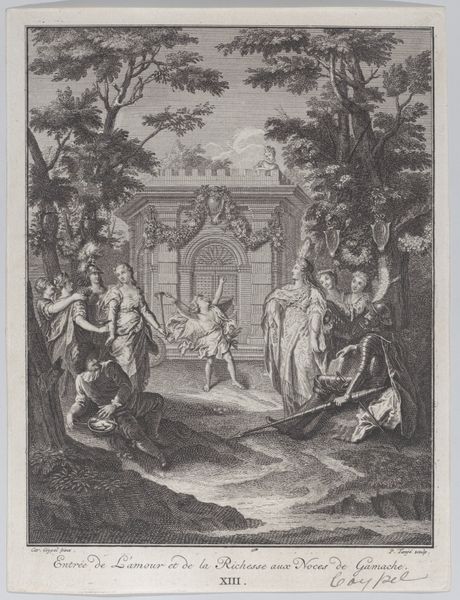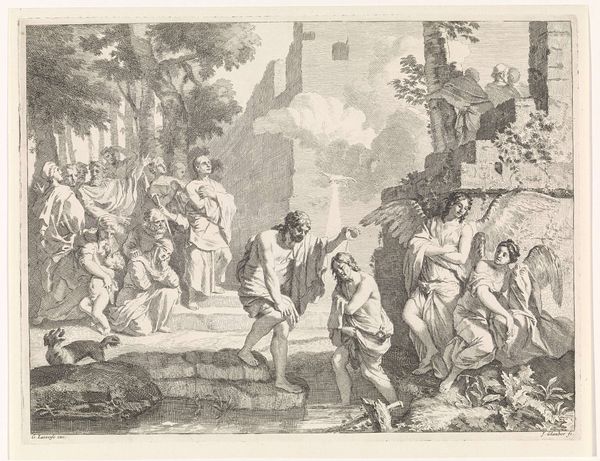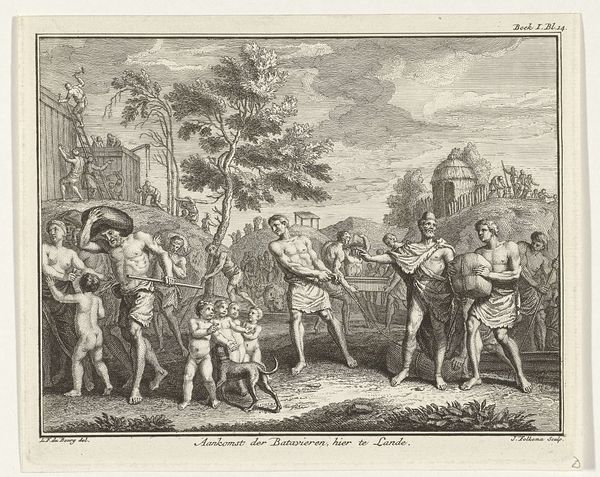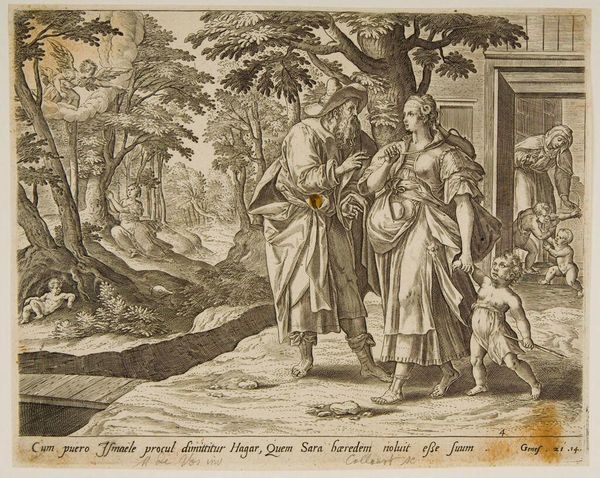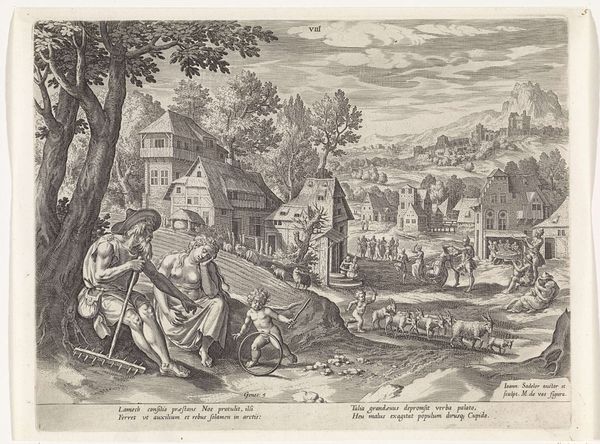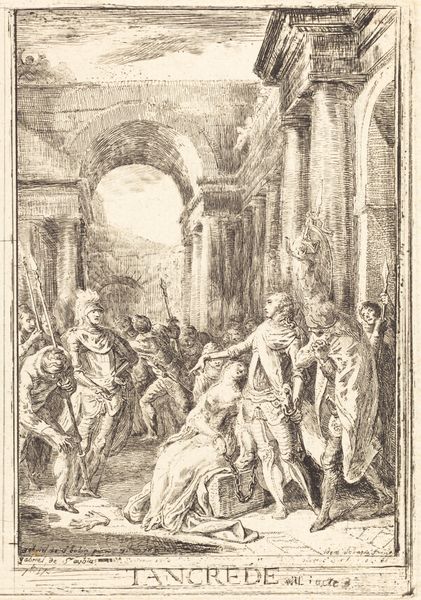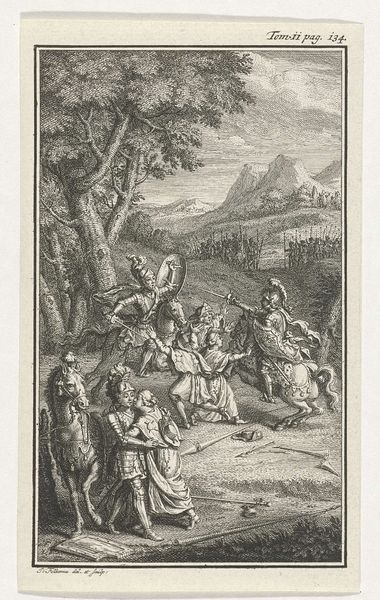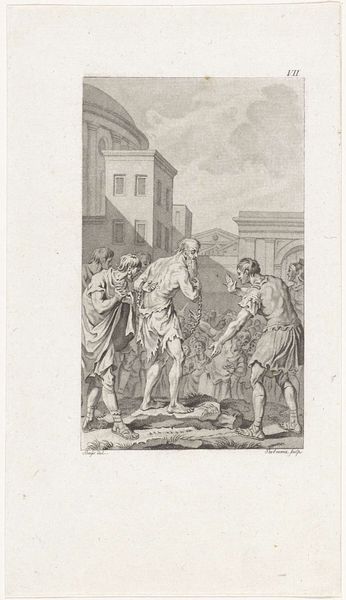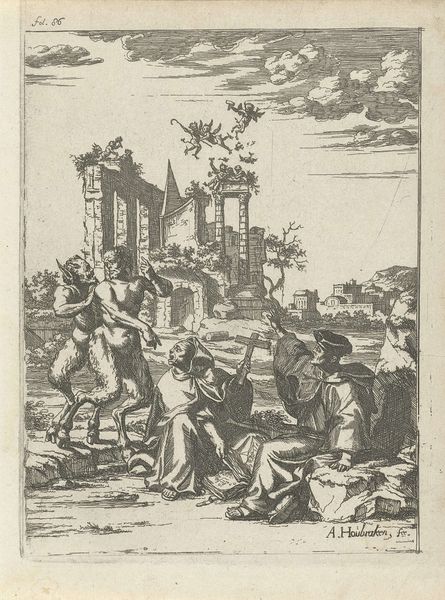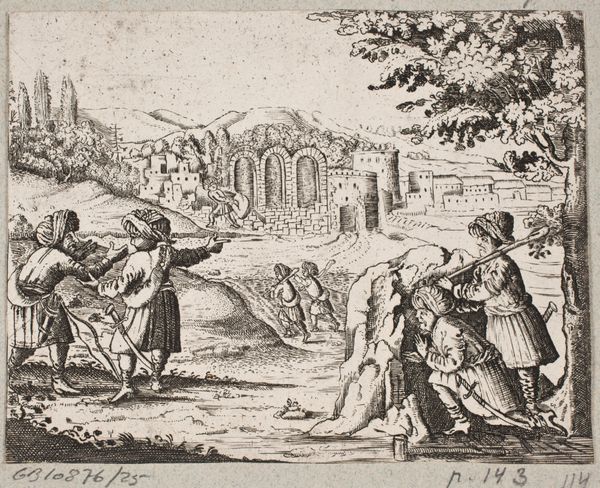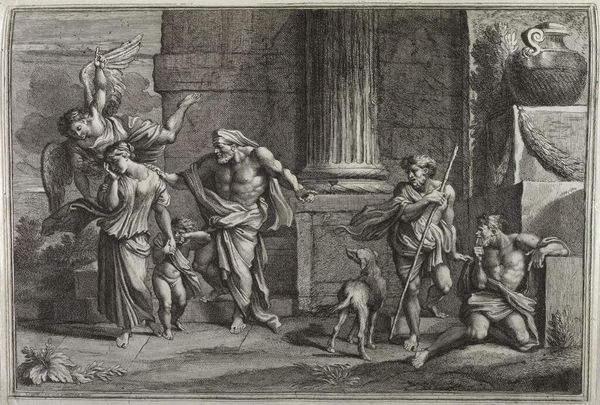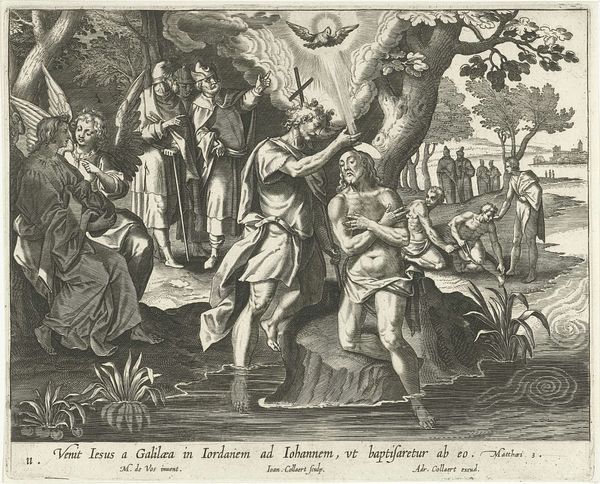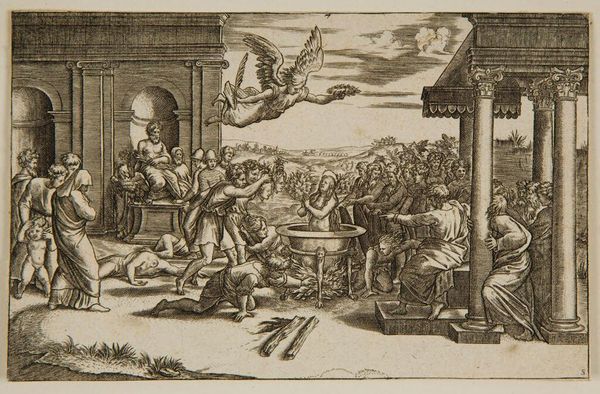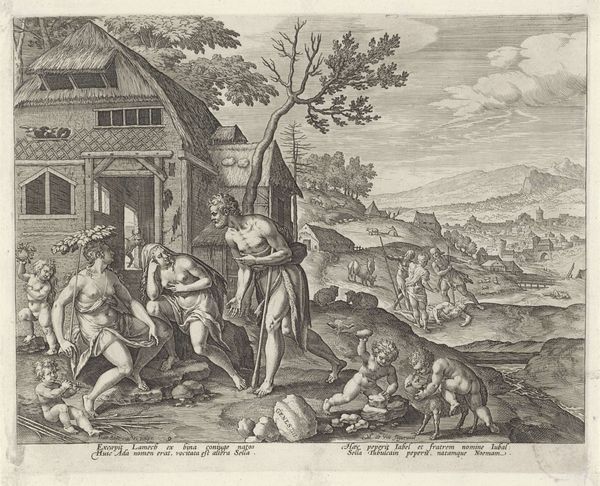
engraving
#
narrative-art
#
landscape
#
figuration
#
history-painting
#
engraving
Dimensions: height 186 mm, width 245 mm
Copyright: Rijks Museum: Open Domain
Editor: This is Paul van Somer II’s engraving, "Procris en de vermomde Cephalus," made in 1677, housed in the Rijksmuseum. It feels incredibly theatrical, with that architectural backdrop and the gesturing figures. What do you make of it? Curator: This engraving visualizes a moment from Ovid's Metamorphoses, and its cultural impact went beyond pure storytelling. The choice of depicting classical mythology in the 17th century was strategic. Artists, like van Somer, utilized these stories to engage with humanist ideals and explore contemporary moral questions around marital fidelity and deception, themes prevalent within artistic and social circles of the time. Do you notice how the narrative unfolds almost like a stage play? Editor: Absolutely! There's a distinct foreground and background, with these little cherubs acting almost like a Greek chorus. The figures of Procris and Cephalus, though, seem...stiff, formal. Curator: Indeed, that formality reflects the institutional role art played in communicating certain social values. Van Somer was commissioned and catered to a specific audience within a hierarchical patronage system. The rigidity you see in the figures might represent the social constraints and expectations of behavior for the aristocratic class. In your opinion, does this stiffness hinder the emotional impact, or perhaps reinforce a sense of detachment appropriate for its era? Editor: I think it's both. The emotional distance makes me question the intentions of representing the tale with such emphasis on the artifice of the staging. It raises questions about power and its representation. Curator: Precisely. And reflecting on the history of image-making during the 17th century and its link to politics illuminates its role within culture at large. Editor: I see it differently now. Thank you for broadening my view on this work.
Comments
No comments
Be the first to comment and join the conversation on the ultimate creative platform.
